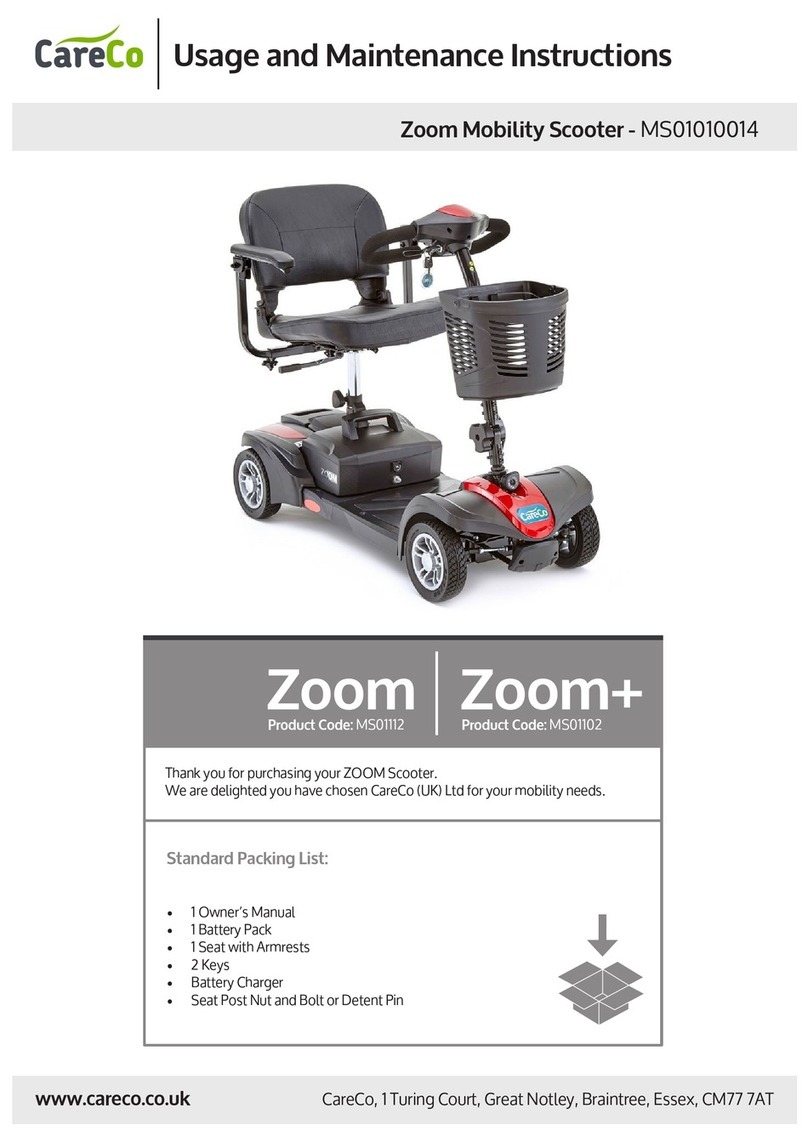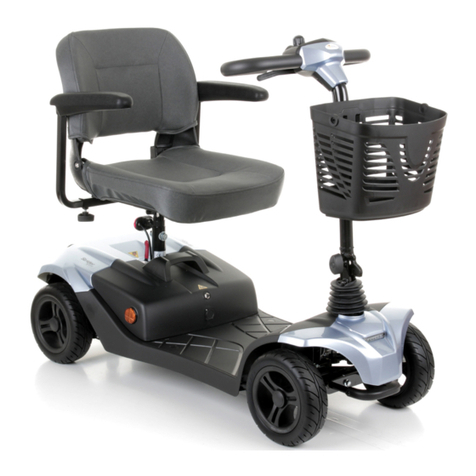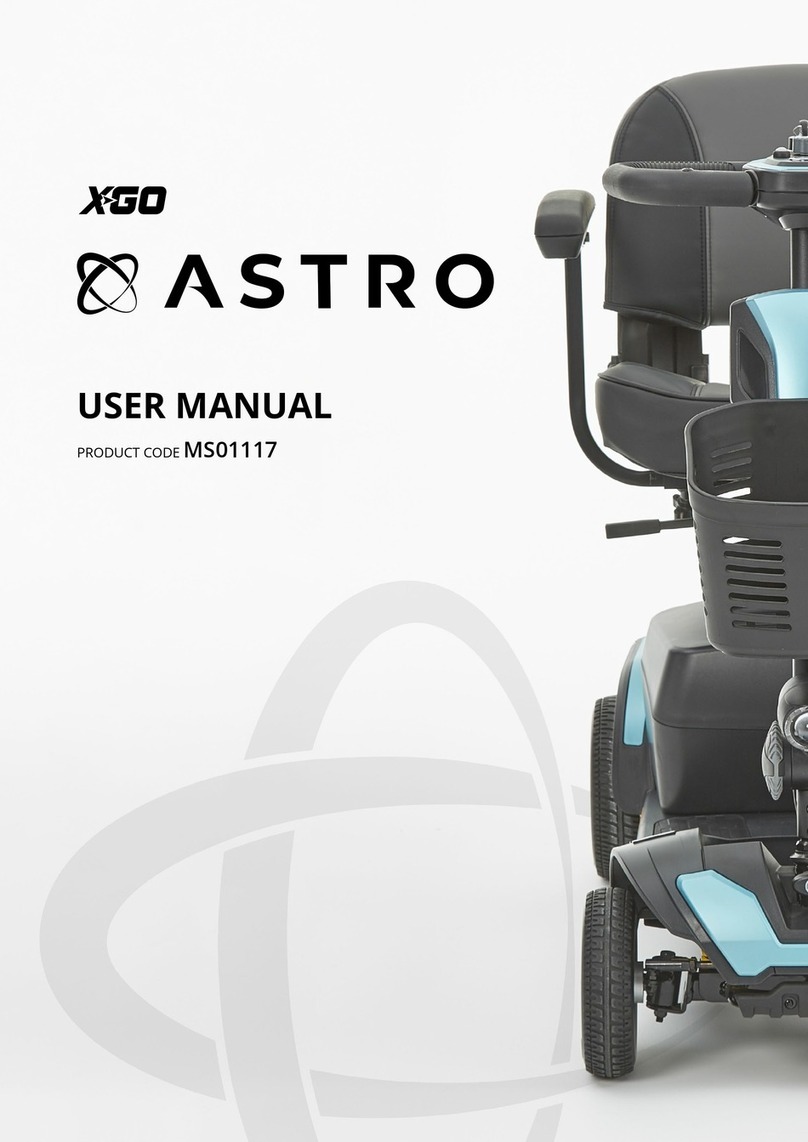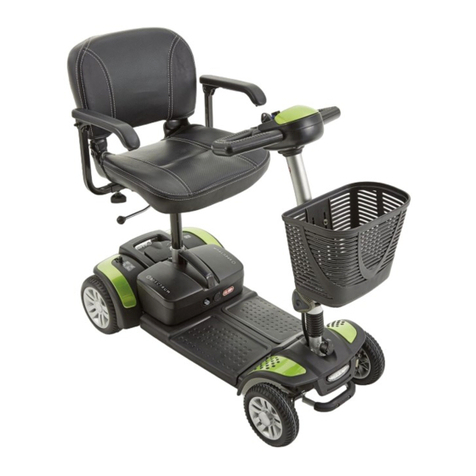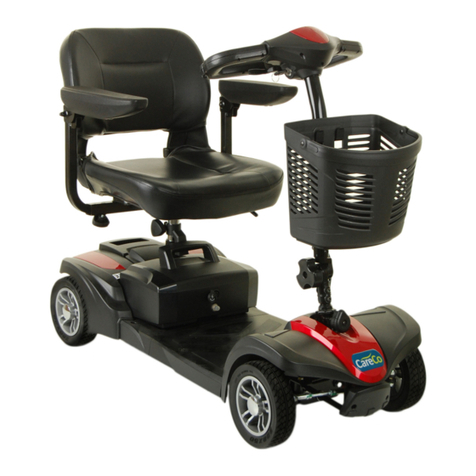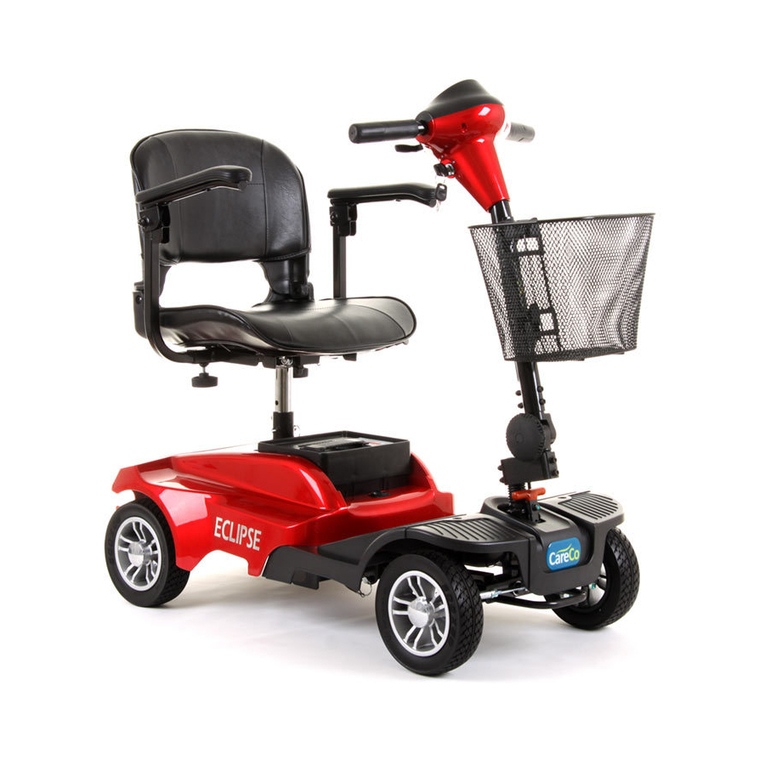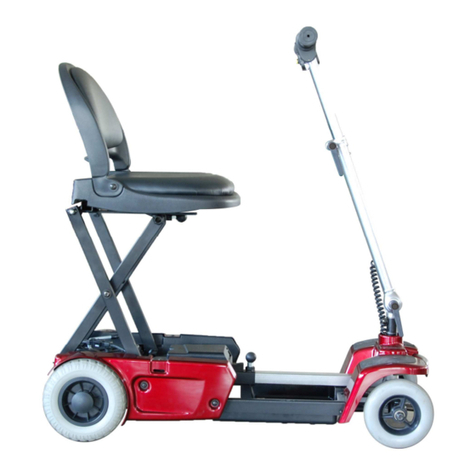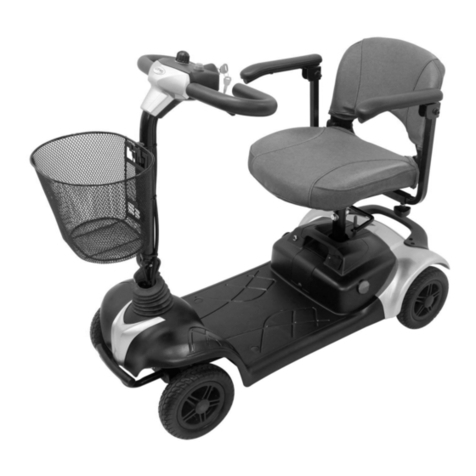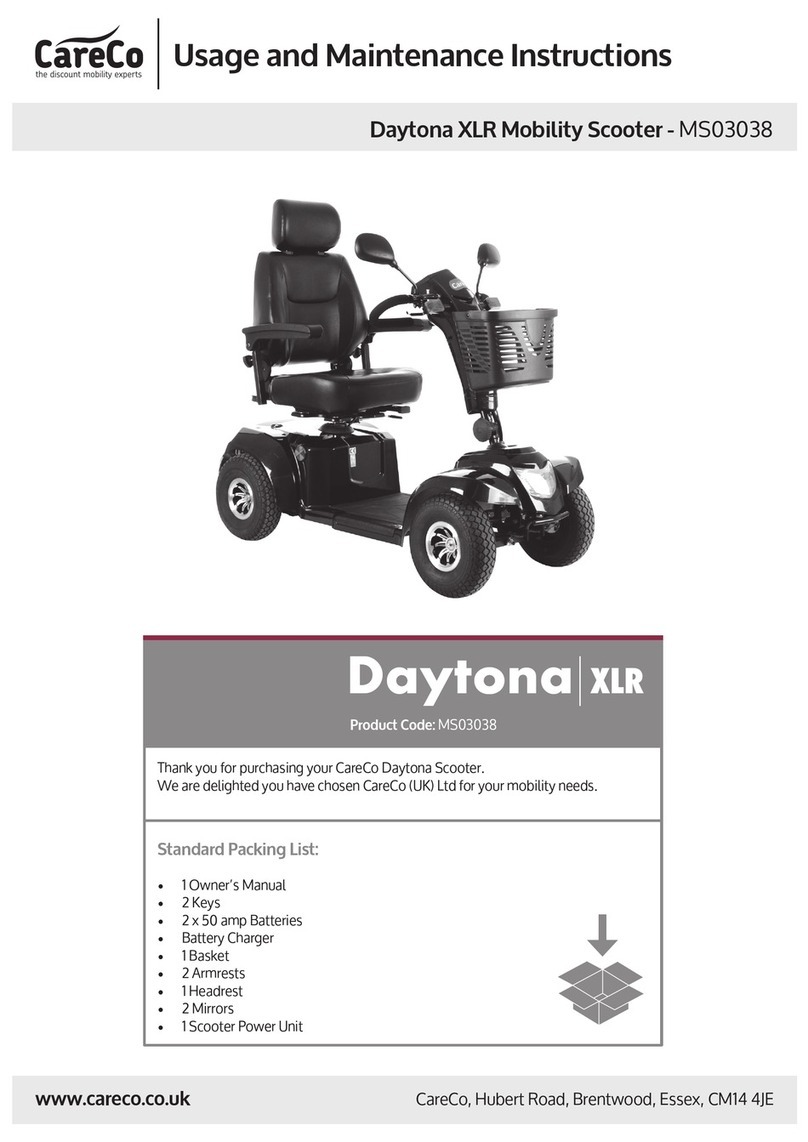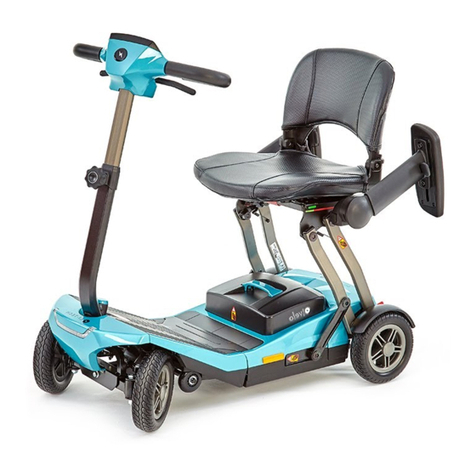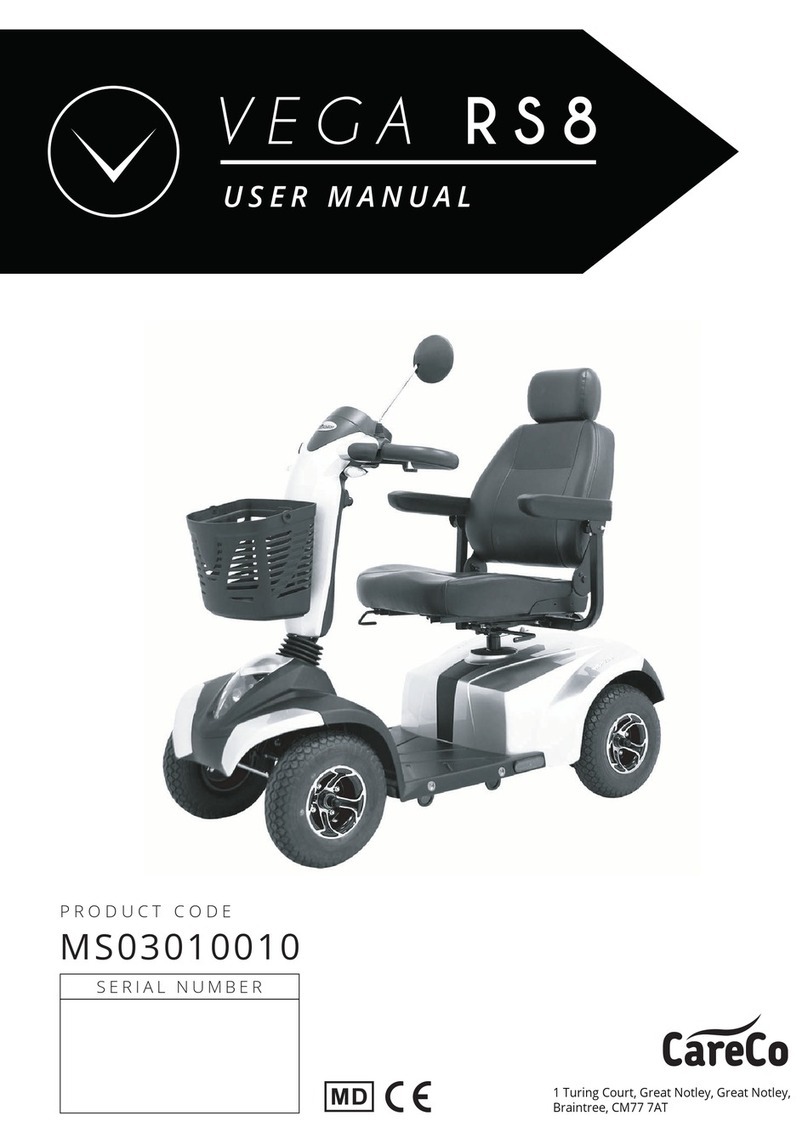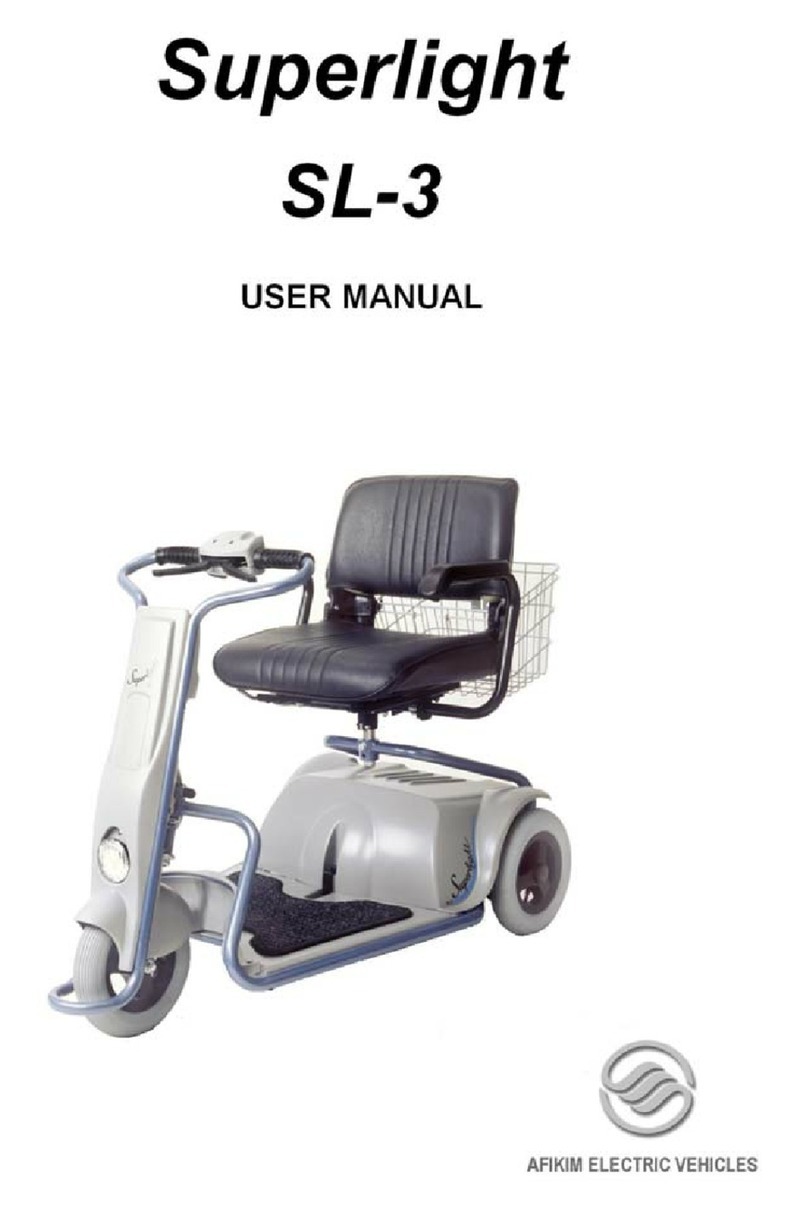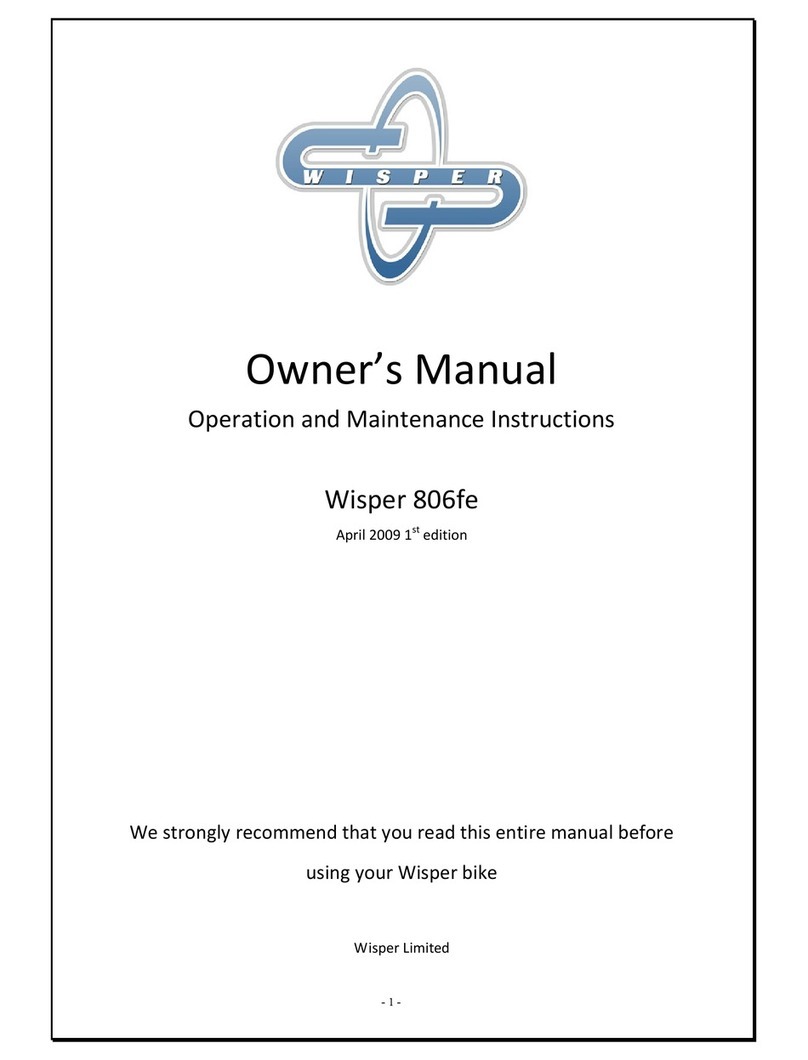
7
2.SAFETY NOTICE
PERFORM THE FOLLOWING INSPECTIONS PRIOR TO USING THE SCOOTER:
BEFORE DRIVING
The use of this scooter is subject to the same traffic rules as pedestrians
Practice operating the Scooter
• Check the condition of the tyres. Make sure there is no damage or excessive wear.
• Check all electrical connections. Make sure they are tight and not corroded.
• Check all harness connections. Make sure they are secured properly.
• Check the brakes to ensure they operate properly.
• Check the battery indicator to make sure the battery is fully charged.
• Ensure the manual freewheel lever is in drive mode before sitting on the Scooter.
If the user finds any issues, please contact the certified provider. Please refer to the
contact information insert in your owner’s pack.
The user should be familiar with the use and operation of the scooter before riding.
Therefore, always observe the following safety precautions.
Therefore, for your safety, please therefore follow the rules that apply to pedestrians.
• Ride only on the pavement, single carriage roads, or pedestrian zones. Never drive
on motorways or dual carriageways.
• Do not ride the Scooter after consuming alcohol or when tired.
• Be careful when riding the Scooter in low light. The scooter is not designed for use
at night.
• The scooter may only be used on the pavement or pedestrian areas at 6.4 km/h.
Ensure the user stays within this limit by using the 6.4 km/h switch.
Familiarize yourself with the operation of the scooter before using it in crowded or
dangerous areas. We recommend practicing in a large area such as a park. Be aware of
different driving motions such as acceleration, stopping, turning, reversing, and going
up and down ramps to avoid accidents when riding the scooter.
• Set the speed dial to the tortoise marker when practicing for the first time.
• The user should be accompanied by a companion with when driving on the road
for the first time.
• The user should only use the high-speed setting if they are confident that the
scooter can be safely operated and controlled.
